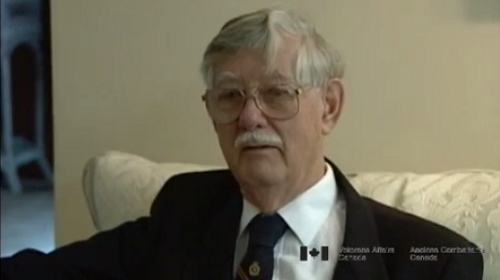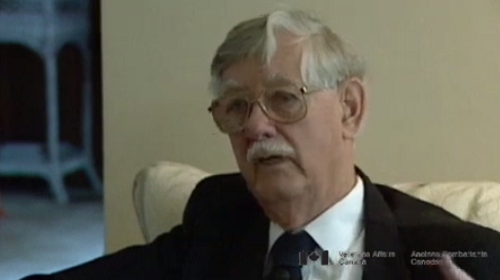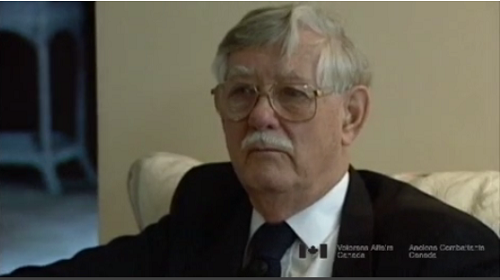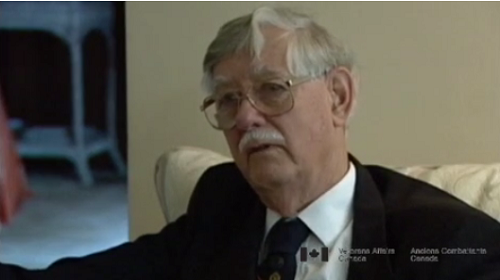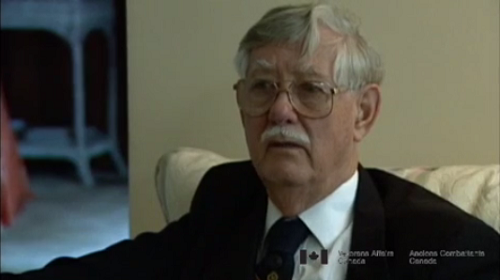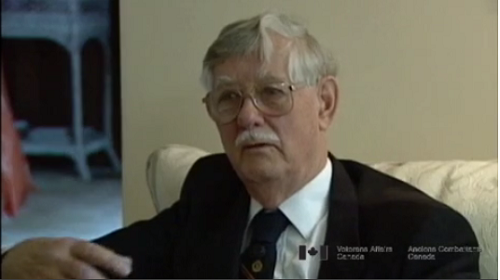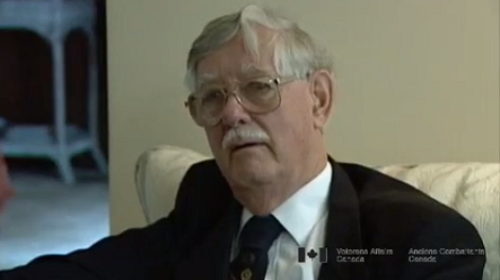Call Signs and Radio Silence
Heroes Remember
Call Signs and Radio Silence
Current position:00:00:00
Total time:--:--:--
So then we went overseas and I went to two
or three stations there flying Oxford aircraft;
I checked on them at night, we did these flights
and that's whenever the Halifax's and the
Lancaster's were doing their night bombing and
the Americans did it during the daytime.
So at night we'd be up next to Oxford and
you weren't quite, there was so many airports;
it seemed to me there were airports everywhere
which would light up and then all the lights would
all go out, you know. I'd say, “Oh my God!”
They had what they called this “darky, darky”
sort of thing, I believe that's what the call
sign was and when you called,
“darky, darky” immediately you got these
search lights that just light you up that you
can't see and then they'd go off and then one
light would go in a direction and you'd go in
that direction and then it got me on the
right path and there I was.
It was radio silence as well, of course,
so when you say “darky, darky” you had
to do a lot of forms when you got down.
Related Videos
- Date modified:



